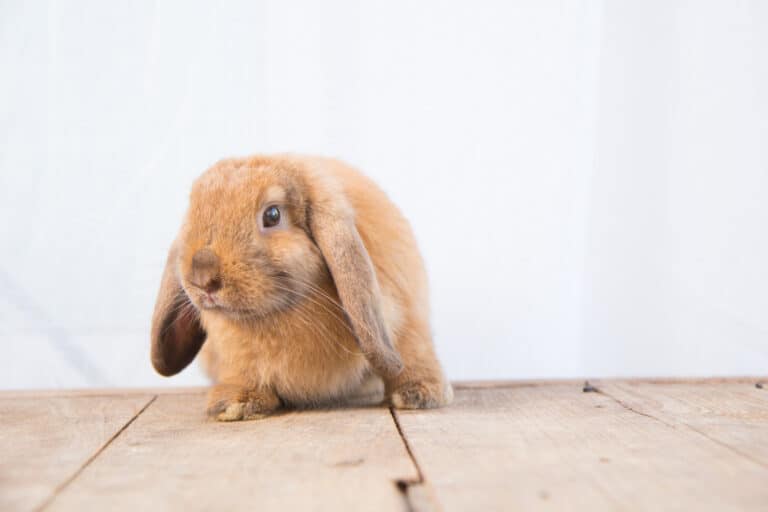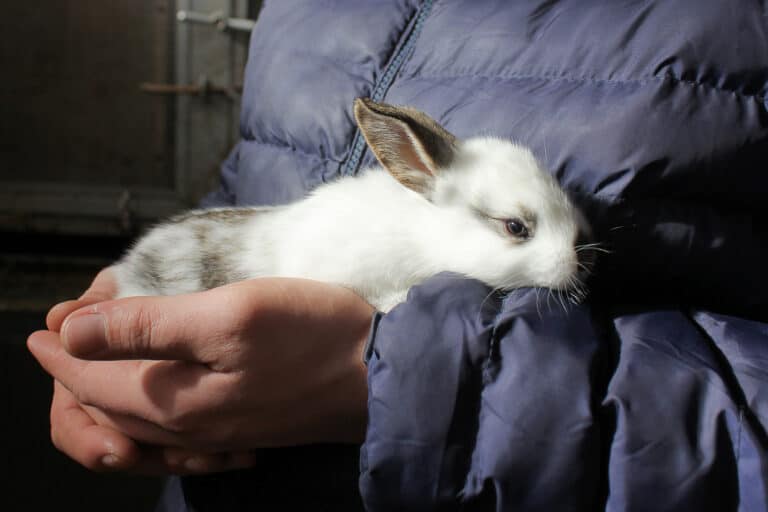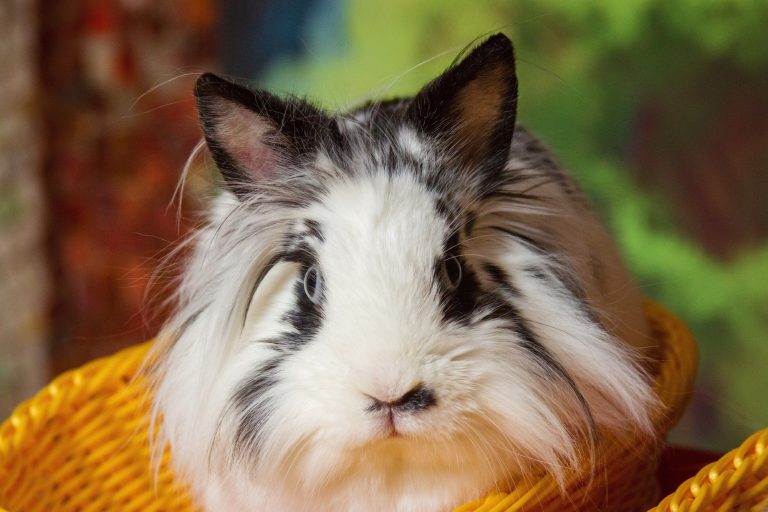Are Rabbits Rodents? Find Out More About These Small Mammals

We understand how pet owners want to know everything about their beloved animal companions. So it’s only natural for you, bun moms and dads out there, to wonder what animal family your fur babies belong to. Some of you might even ask, are rabbits rodents, after hearing that they’re some rodent species.
Let’s delve into the traits rabbits possess to understand whether they’re considered species of rodents.
What Are Rodents?
Rodents are creatures with short legs, chubby bodies, and, quite often, a long tail. They sport four incisor teeth, two on the upper jaw and two on the bottom, and those little chompers never stop growing. The group they belong to, the order Rodentia, is the biggest mammal family, and over 40% of its warm-blooded members are rodents.
The Rodentia order got its name from the Latin word that means “to gnaw or chew.” Rodents lack canine teeth that animals use for tearing food. Instead, their upper and lower incisors boast self-sharpening features caused by the uneven wearing of their pearly whites’ dentin and enamel.
This dental unevenness grinds the teeth to a sharp point, making rodents expert gnawers. The constant munching helps wear down those ever-growing teeth.
Besides mice and rats, other members of the rodent species include guinea pigs, prairie dogs, squirrels, and lemmings.
What Are Rabbits?
Like rodents, rabbits are small mammals. Interestingly, they used to be part of the rodent family back in the early 20th century. However, they were later moved to a different group called order Lagomorpha because they turned out to be quite different from typical rodents.
One of the most well-known species of rabbit is the European rabbit (Oryctolagus cuniculus), considered the ancestor of all domestic buns. This bunny breed, along with the Eastern Cottontail, was first brought to North America by European settlers as a source of food, fur, and as game animals. Unfortunately, the two bun types became invasive and competed with other wild animals for food and habitat.
Rabbits sport long ears, short tails, and powerful hind legs. They’re herbivores, meaning they have a digestive tract designed to digest plant material. Aside from providing the nourishment buns need, chewing fibrous plant matter, such as grass hay, helps keep their teeth from getting overly long and causing all sorts of dental problems.
They come in various sizes, from tiny ones like the Netherland Dwarf, which could fit in your palm, to the big buns like the Flemish Giant, which can weigh as much as a chubby house cat.
Being social animals, rabbits often bond with their humans, making them great pets and companions.

How Are Rabbits Similar to Rodents?
It’s not surprising many people believe that rabbits and rodents belong to the same animal family because of the traits and physical characteristics common to both species. Here are some of those.
- Both thrive on plant material.
- They have short breeding cycles and are some of the fastest-breeding mammals.
- Both are expert gnawers
- They have a cecum to digest their food.
- Rabbits and rodents are placental mammals, meaning they have a placenta during pregnancy.
- Their cheek teeth look the same because they’re both plant-eaters.
What Makes Rabbits Different from Rodents?
James W. Gidley, an American paleontologist and museum curator who studied various fossil mammals, was among the first to propose that rabbits and hares should be classified separately from rodents. He based the proposal on the two species’ distinct dental and skeletal features.
Aside from the bone structure, significant differences between buns and rodents exist. Let’s take a closer look at some of those:
1. Rabbits Are Obligate Herbivores
The term obligate herbivore means that buns are hard-core plant eaters. That is, they chomp down on greens, fresh veggies, and other plant matter exclusively. They don’t eat meat because they cannot efficiently digest and extract nutrients from animal-based foods.
Meanwhile, being omnivores, rodents enjoy a more varied diet. These species of mammals often feast on small animals as well as plant materials like nuts, seeds, grains, and roots. For example, kangaroo rats, one of the many types of rodents, mainly eat seeds but sometimes devour small insects.
2. Rabbits Process Food Differently
Buns have a unique way of ensuring they get the maximum amount of nutrients from their meals. They eat their food a second time. Here’s how it goes.
Their cecum, a pouch that sits at the head of the large intestine, contains beneficial bacteria that aid in breaking down and fermenting cellulose found in plants. After a rabbit has scarfed down hay and veggies, those bacteria help process the food.
Following its journey through the digestive tract, the food comes out as a soft, black pellet, a type of poop called cecotropes, that rabbits eat. It sounds gross, we know, but this unique fecal material contains vitamins, minerals, and other nutrients buns need to stay healthy.
Some types of rodents have a cecum, too, and some do indulge in coprophagy (the unsavory practice of eating poop). Still, the behavior is not as common among rodents as it is among rabbits.
3. Rabbits Have Distinct Teeth
Although buns and rodents both have perpetually growing teeth, that’s where the similarities between their chompers end. While rodents have only a single pair of incisors (in the upper and lower jaw), rabbits have a couple of pairs (or 4 incisors in all).
Rabbits have a smaller set of peg-like teeth behind their top incisors. These are about ¼ the size of their main incisors, and many believe they help rabbits bite through vegetation more easily.
Also, the color of their incisors differs. Rodents’ incisors are orange, while those of buns are white. Moreover, rabbits have more pearly whites than rodents. They have 28 compared to rodents’ 16.
4. Variations in Male Private Parts
Both male rodents and rabbits have two scrotal sacs that can be drawn into their body cavity when needed. Most mammals also have something called a baculum, or a penis bone, which gives firmness to the male’s reproductive appendage and helps them mate for longer periods. However, while rodents have baculum bones, rabbits don’t.

Differences in Caring for Pet Rabbits and Rodents
Rabbits and rodents are both mammals, but they belong to different orders and have distinct characteristics. So, if you want to have them as pets, take note of the differences in their care requirements.
Diet
Because rabbits are obligate herbivores, their diet consists mainly of plant matter. They need a variety of fresh greens, vegetables, and hay to keep their digestive system healthy.
Meanwhile, rodents are omnivorous, so they can eat plant and animal matter. Aside from the usual seeds, nuts, grains, fruits, and veggies, you can give your pet rat meats, such as cooked beef and chicken.
Dental Health
Rabbits have four incisors, while rodents only have two. This means rabbits need more chewing and grinding to wear down their teeth, while rodents need more gnawing and biting. Provide your pet rabbit and rodent safe chew toys and wood blocks to prevent dental problems.
Grooming
Rodents don’t usually shed fur. As such, they have lesser grooming requirements than rabbits. Rabbits molt, so you’ll need to brush them regularly to get rid of loose hair.
Still, both creatures should have clean cages, and their bedding and litter material should be changed regularly.
As you can see, rabbits and rodents might have a few things in common, but they belong to different biological groups. Regardless of their distinctions, both these creatures have their unique charm, and either will make an excellent pet.
We hope you enjoyed this post! If you did, will you give it a share or two 🙂 Thank you! ~from Every Bunny Welcome







